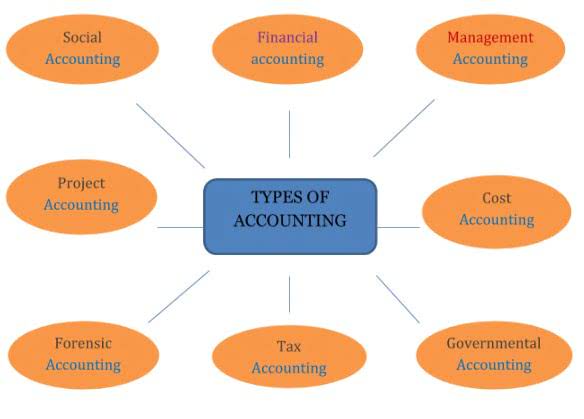How to Calculate Cash Flow Formulas Included

Even though the Format above includes all the aspects that can impact the Cash Flow from Operations using the Indirect Method – you will only apply what is relevant to the company you are analyzing. Shaun Conrad is a Certified Public Accountant and CPA exam expert with a passion for teaching. After almost a decade of experience in public accounting, he created MyAccountingCourse.com to help people learn accounting & finance, pass the CPA exam, and start their career. It might be helpful to look at an example of what the indirect method actually looks like.
AUD CPA Practice Questions: Reviewing Interim Financial Information

Corporate management, analysts, and investors use this statement to judge how well a company is able to pay its debts and manage its operating expenses. The cash flow statement is one of several financial statements issued by public companies, which also include a balance sheet and an income statement. The resulting figure is your net capital spending (NCS), which indicates the net cash used for or received from investments in the company’s long-term assets. Cash flow from assets (CFFA) represents the total cash generated by a business’s assets within a specific period. Cash flow from assets focuses only on cash generated by operations, excluding external financing activities, such as selling stocks.
- Receiving timely payments from your customers is another great way to improve cash flow.
- Your balance sheet shows an original value of $15,000 and accumulated depreciation of $10,000.
- A growing business’s NWC often increases as it invests in inventory and extends credit to customers.
- When a company buys assets for the long term it’s included in cash outflow where it sells any assets so it’s Calculated in cash inflow.
Cash Flow From Investing Activities Example

Whether you’re an investor, analyst, or business owner, knowing how to calculate CFA can significantly enhance your financial analysis and decision-making. Cash flow from operating activities does not include long-term capital expenditures or investment revenue and expense. CFO focuses only on the core business, and is also known as operating cash flow (OCF) or net cash from operating activities. The cash flow from assets (CFFA) formula is necessary for analyzing a business’s financial health.
- Capital expenditures can be found on the cash flow statement under the investing activities section.
- Equity issuance is capital obtained by a company by issuing new shares of stock.
- It might be helpful to look at an example of what the indirect method actually looks like.
- Having a clear understanding of this concept can greatly benefit your financial decision-making.
- Cash flow from investing activities measures the cash generated or spent on investments in assets such as property, equipment, or technology.
- Cash flow from financing (CFF) shows the net flows of cash used to fund the company and its capital.
How to Calculate Cash Flow Using a Cash Flow Statement

It is simply a book entry and is therefore added back to find the net cash flow from operations – which would then total $600,000. As a small business owner, you need to keep track of cash flow into and out of your cash business’s financial health to have a more holistic understanding of your business’s financial health. Forecasting your cash flow in the future is also necessary to solve the financial problems before they hit. If you need more support in keeping track of your cash flow, learn about our bookkeeping solutions here. Knowing how to calculate free cash flow and analyze it will help business owners manage their cumulative cash flow more effectively. Additionally, FCF calculation will give investors with insight into a company’s financials, helping them make better investment decisions.
- This knowledge helps you make informed decisions about spending, saving, investing, or seeking additional sources of income.
- Financing activities may include borrowing, repaying debt, issuing or repurchasing stock, and paying dividends.
- As you can see in the above example, there is a lot of detail required to model the operating activities section, and many of those line items require their own supporting schedules in a financial model.
- The resulting figure is your net capital spending (NCS), which indicates the net cash used for or received from investments in the company’s long-term assets.
- By carefully considering these figures and conducting a thorough analysis, you can gain a better understanding of your business’s financial position.
Financing activities may include borrowing, repaying debt, issuing or repurchasing AI in Accounting stock, and paying dividends. It provides insights into how a company raises capital and manages its financial structure. Cash flow is one of the most critical financial metrics for any business or investor. It helps determine how effectively a company can manage its finances and sustain its operations. One important aspect of cash flow is the Cash Flow from Assets, which reflects how well assets contribute to a company’s ability to generate cash. To simplify the process of calculating this essential metric, the Cash Flow from Assets Calculator provides an easy-to-use tool for accurately determining this figure.
How to Use the Cash Flow from Assets Calculator
Cash flow from investing activities measures the cash generated or spent on investments in assets such as property, equipment, or technology. It reflects the changes in a company’s long-term investments and capital expenditures, providing insights into its growth and strategic decisions. Investors examine a company’s cash flow from operating activities, within the cash flow statement, to determine where a company is getting its money from. In contrast to investing and financing activities, which may be one-time or sporadic revenue, the operating activities are core to the business and are recurring in nature. Cash flow from assets is crucial for understanding a company’s capability to generate cash from its operating activities after accounting for investments and changes in working capital.
Net Cash-Flow Formula

Cash flow is the movement of money into and out of a company over a certain period of time. If the company’s inflows of cash exceed its outflows, its net cash flow is positive. In this article, we will walk you through the purpose of the Cash Flow from Assets Calculator, explain how to use it, provide a real-world example, and offer helpful insights into its benefits. Additionally, we will answer 20 frequently asked questions about cash flow from assets, ensuring you understand the importance of this metric in various financial contexts. Increasing CFFA is essential to improve liquidity, fund expansion initiatives, and fortify their financial resilience, cash flow from assets formula and various strategies can enhance CFFA and contribute to long-term sustainability. By streamlining processes, businesses can minimize waste and inefficiencies, ultimately reducing operational costs and enhancing cash flow.

#4 Free Cash Flow to Equity (FCFE)
Cash flow analysis is essential because it enables businesses to assess their liquidity and solvency positions accurately. By analyzing cash flows from assets, you can identify any potential gaps between inflows and outflows of cash. This analysis allows you to make proactive adjustments in operations or financing activities to maintain unearned revenue a healthy cash position. OCF begins with net income from the income statement then adds back any non-cash items, and adjusts for changes in net working capital, to arrive at the total cash generated or consumed in the period. To calculate cash flow from investing activities, add the purchases or sales of property and equipment, other businesses, and marketable securities.



